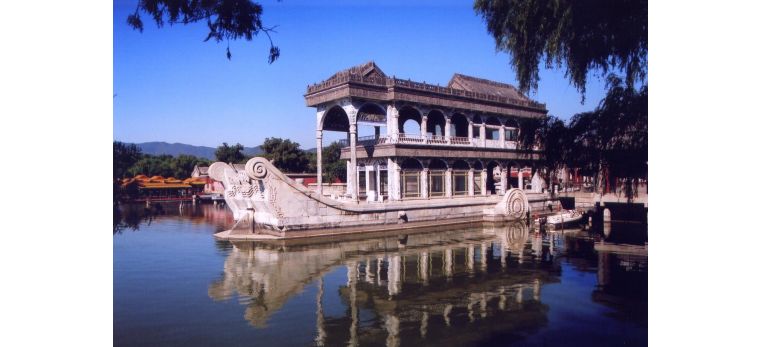
Situated in the Haidian District northwest of Beijing, Summer Palace is 15 kilometers (9 miles) from the downtown area. Being the largest and most well-preserved royal park in China, it greatly influences Chinese horticulture and landscape with its famous natural views and cultural interests, which also has long been recognized as 'The Museum of Royal Gardens'.
Yiheyuan radiates fully the natural beauty and the grandeur of royal gardens. Composed mainly of Longevity Hill and Kunming Lake, it owns over 3,000 man-made ancient structures, including pavilions, towers, bridges, corridors, etc.
Summer Palace History
In 1750, the construction of the lavish royal garden started to prepare for the birthday ceremony of Emperor Qianlong’s mother, with the original name being 'Qingyi Garden' (Garden of Clear Ripples).
In 1869, like most of the gardens in Beijing, the Summer Palace could not elude the rampages of the Anglo-French Allied Force and was destroyed by fire.
In 1888, the garden was reconstructed and renamed as the Summer Palace (Yiheyuan). It was recorded that Empress Dowager Cixi embezzled navy funds to reconstruct it as a resort where to spend the rest of her life.
In 1900, Yiheyuan suffered another hit by the Eight-Power Allied Force and was repaired in the next two years.
In 1914, it was open to the public.
In 1998, the Summer Palace ranked amongst the World Heritage Sites by UNESCO, as well as one of the first national AAAAA tourist spots in China.
Court Area
It is located in the northeast of the Summer Palace, and it spreads from East Palace Gate to the northeast coast of Kunming Lake. This was a substitute where Empress Dowager Cixi and Emperor Guangxu met officials and conducted state affairs. With the same pattern of the imperial palace of China-'Palace in front and garden behind', the Court Area consists of sections for both court affairs and living. East Palace Gate and Hall of Benevolence and Longevity served as office of the Emperor. The Hall of Jade Ripples was for Guangxu to live in and the Hall of Joyful Longevity for Cixi. There are also the Garden of Virtue and Harmony where Cixi was entertained and Yiyun Hall where once lived the Empress Longyu. Moreover, this area is an integrated transport hub and the first best stop for visitors to enjoy attractive view of Kunming Lake and Longevity Hill.
Front Area of Longevity Hill
This is the most magnificent area with the most constructions. It is symmetrically laid out in east and west many delicate buildings and graceful gardens with the south-facing Tower of Buddhist Incense as the central axis. Walking up to the hilltop, on which lots of important buildings are positioned, including Hall of Dispelling Clouds, Hall of Moral Glory, Baoyun Bronze Pavilion, Revolving Archives, Hall of the Sea of Wisdom, etc.
Kunming Lake
The area covers a larger part, and opens up the vista of Kunming Lake, as well as the sights around Back Lake (Houxi River). East Causeway of the lake is connected to the West Causeway by Long Gallery, which both were interspersed with pavilions, bridges and wharfs. Famous attractions amongst this area are numerous, including Seventeen-Arch Bridge, Bronze Ox, Nanhu Island, Hall of Embracing the Universe, Spacious Pavilion, Pavilion of Bright Scenery, Marble Boat, Suzhou Market Street, etc. As breeze fluttering, waves gleam and willows kiss the ripples of the vast water, the highlights can't be let off from any of the delightful scenery above.